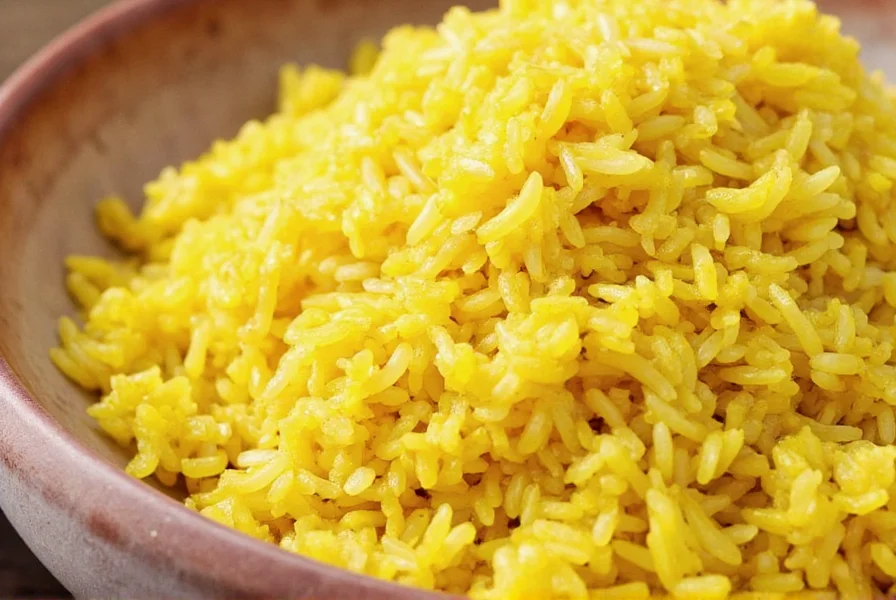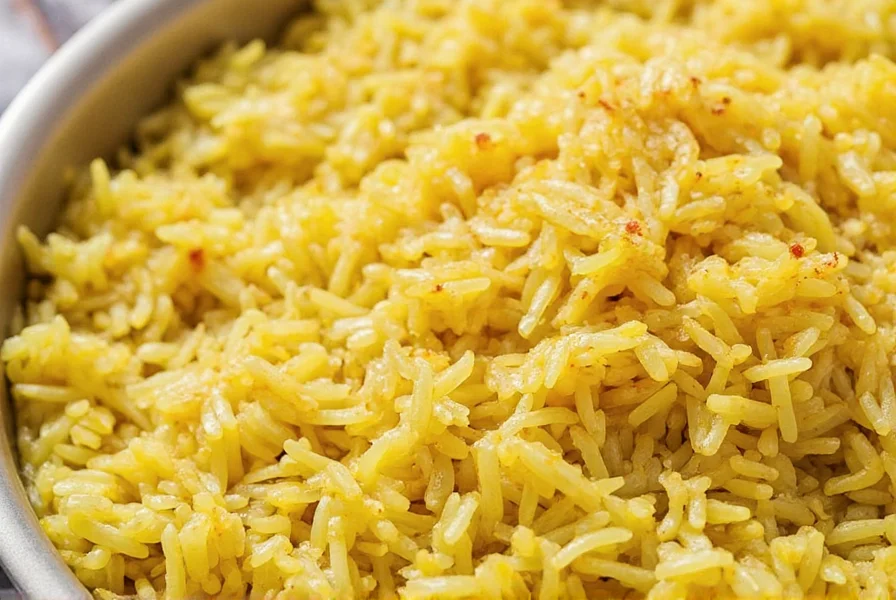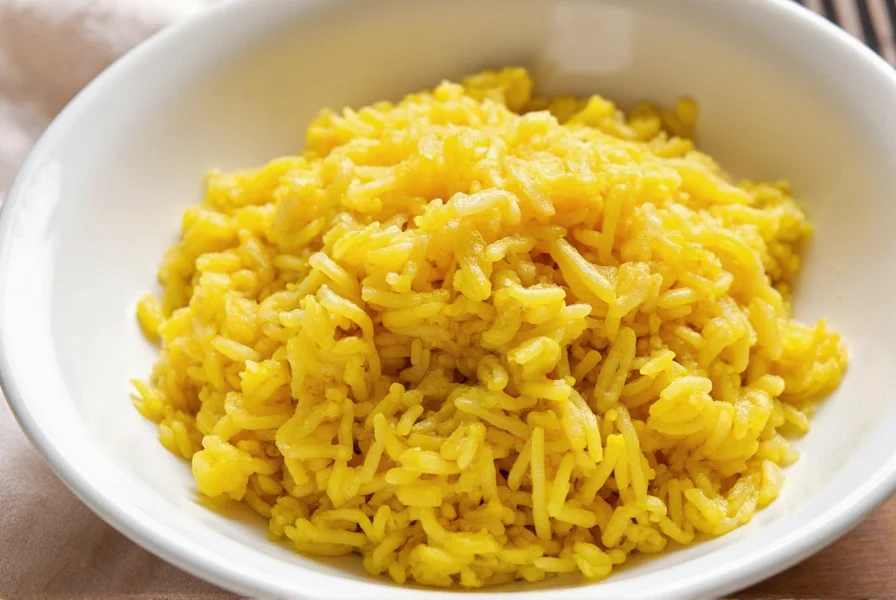Creating perfect saffron rice requires understanding this precious spice's properties and proper handling techniques. Saffron threads contain crocin (providing color), picrocrocin (bitter flavor), and safranal (aroma), which release optimally when steeped correctly. This guide explores authentic methods from culinary traditions that have perfected saffron rice over centuries, with practical tips for home cooks.
The Science Behind Perfect Saffron Rice
Saffron's delicate compounds require specific treatment to maximize flavor and color. Contrary to popular belief, adding threads directly to boiling water yields inferior results compared to proper steeping. The ideal method involves:
- Crushing 10-15 threads between your palms
- Steeping in 2-3 tablespoons warm (not boiling) liquid for 15-20 minutes
- Adding both threads and liquid to your rice
This technique extracts maximum flavor while preventing bitterness. For authentic Persian saffron rice recipes, many chefs use a combination of water and rosewater for enhanced floral notes. The golden hue should be even throughout, not concentrated in spots.

Five Authentic Saffron Rice Variations
Different culinary traditions have developed distinctive approaches to saffron rice. Understanding these variations helps you select the right method for your meal:
| Recipe Type | Key Characteristics | Saffron Preparation | Cooking Time |
|---|---|---|---|
| Persian Tahdig | Crispy bottom layer, fluffy grains | Steeped in rosewater | 60-75 minutes |
| Spanish Paella Rice | Socarrat crust, tomato base | Bloomed in warm broth | 25-30 minutes |
| Indian Biryani | Layered with meat, yogurt marinade | Mixed with kewra water | 45-60 minutes |
| Moroccan Saffron Rice | With almonds and raisins | Steeped in orange blossom water | 35-40 minutes |
| Simple Steamed Saffron Rice | Basic preparation for beginners | Direct addition to cooking water | 20-25 minutes |
Mastering Persian Saffron Rice (Tahdig)
Persian saffron rice represents the pinnacle of saffron rice preparation. The authentic Persian saffron rice technique produces fluffy grains with a coveted crispy bottom layer called tahdig. Follow these steps for restaurant-quality results:
Ingredients for 4 servings
- 2 cups basmati rice
- 15 saffron threads
- 3 tbsp warm water
- 1 tbsp rosewater (optional)
- 1/4 cup vegetable oil or butter
- Salt to taste
Step-by-step preparation
- Rinse rice until water runs clear, then soak for 2 hours
- Bring large pot of salted water to boil, add rice and cook 6-8 minutes
- Drain rice and mix with half the saffron liquid
- Line pot with oil, create rice mound with remaining saffron mixture on top
- Cover with towel, cook on low heat 45-60 minutes
- Invert onto platter to reveal golden crust
The key to perfect Persian saffron rice lies in the soaking time and precise heat control. Many home cooks make the mistake of using insufficient soaking time, resulting in uneven texture. For best results with easy saffron rice recipe adaptations, use aged basmati rice which has superior grain separation.

Avoiding Common Saffron Rice Mistakes
Even experienced cooks make these frequent errors when preparing saffron rice recipes:
- Using powdered saffron - Often adulterated and lacks flavor complexity
- Adding threads directly to boiling water - Destroys delicate flavor compounds
- Overcooking the rice - Results in mushy texture that can't absorb saffron properly
- Using insufficient saffron - You need at least 10 threads per serving for noticeable flavor
- Incorrect rice-to-water ratio - Should be 1:1.5 after parboiling for perfect texture
For those seeking budget-friendly saffron rice preparation, consider using a saffron substitute for part of the quantity. A pinch of turmeric provides color (but not flavor), while a few drops of almond extract can mimic some floral notes. However, for authentic saffron rice flavor, nothing replaces the real spice.
Serving Suggestions and Pairings
Saffron rice complements richly spiced dishes and grilled meats beautifully. Traditional pairings include:
- Persian: Serve with khoresh (stews) like ghormeh sabzi
- Spanish: Pair with seafood paella or chicken dishes
- Indian: Accompany biryani with raita and naan bread
- Moroccan: Serve alongside tagines with dried fruits
For Western interpretations of saffron rice dishes, try pairing with roasted chicken, grilled fish, or mushroom risotto. The floral notes of saffron enhance both meat and vegetarian entrees without overpowering them.
Frequently Asked Questions
How much saffron should I use per cup of rice?
For noticeable flavor and color, use 8-12 saffron threads per cup of uncooked rice. Premium saffron requires fewer threads (8-10), while medium-grade needs 10-12. Always steep threads in warm liquid for 15-20 minutes before adding to achieve the best saffron for rice dishes results.
Can I substitute saffron in rice recipes?
While no substitute perfectly replicates saffron's unique flavor, you can create acceptable alternatives. For color, use a pinch of turmeric per cup of rice. For flavor approximation, combine a few drops of almond extract with yellow food coloring. However, for authentic Persian saffron rice or Spanish paella, real saffron provides irreplaceable complexity that defines these traditional dishes.
Why is my saffron rice bitter?
Bitter saffron rice typically results from using boiling water directly on threads, which releases excessive picrocrocin. To prevent bitterness, always steep threads in warm (140-160°F/60-70°C) liquid. Another cause is using too much saffron - stick to 10-15 threads per serving. Properly prepared saffron rice should have floral, honey-like notes with subtle earthiness, not bitterness.
How do I store leftover saffron rice?
Store cooled saffron rice in an airtight container in the refrigerator for up to 3 days. For best results when reheating, add 1-2 teaspoons of water per cup of rice and steam gently. Avoid microwaving without moisture, which dries out the delicate grains. Never freeze saffron rice, as the texture becomes unpleasant upon thawing. For meal prep with saffron rice recipes, prepare fresh whenever possible.











 浙公网安备
33010002000092号
浙公网安备
33010002000092号 浙B2-20120091-4
浙B2-20120091-4